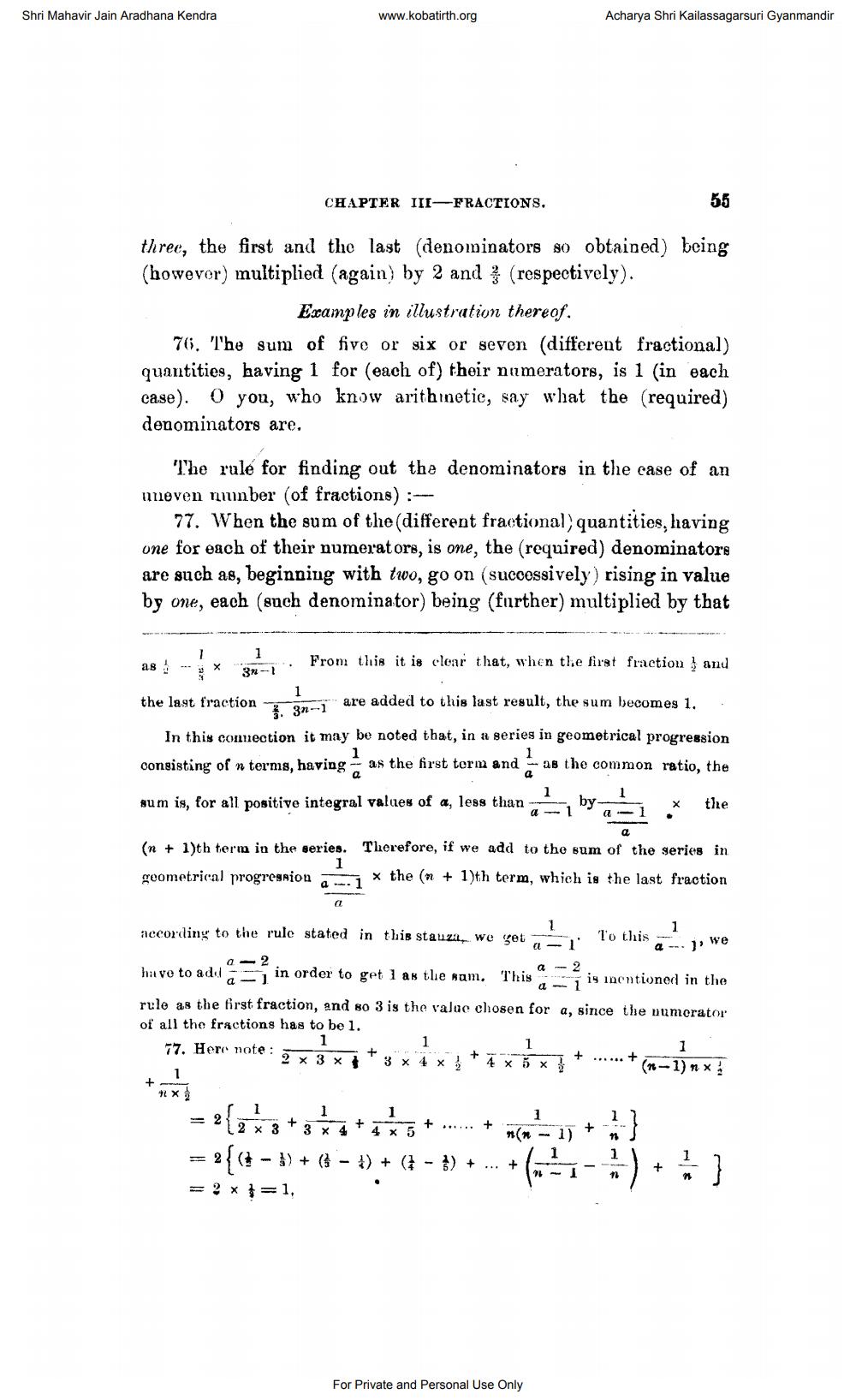________________
Shri Mahavir Jain Aradhana Kendra
www.kobatirth.org
Acharya Shri Kailassagarsuri Gyanmandir
CHAPTER III-FRACTIONS.
55
three, the first and the last (denominators so obtained) being (however) multiplied (again) by 2 and 3 (respectively).
Examples in illustration thereof. 70. The sum of five or six or seven (different fractional) quantities, having 1 for (each of) their numerators, is 1 (in each case). O you, who know arithinetic, say what the required) denominators are,
The rule for finding out the denominators in the case of an meven munber of fractions):
77. When the sum of the different fractional, quantities, having one for each of their numerators, is one, the required) denominators are such as, beginning with two, go on (successively) rising in value by one, each (such denominator) being (further) multiplied by that
as
. From this it is clear that, when the first fraction
-
X
3n
and
the last fraction -
are added to this last result, the sum becomes 1.
.
3. 3n-) are added to
In this connection it may be noted that, in a series in geometrical progression consisting of n terms, having as the first term and as the common ratio, the
sum is, for all positive integral values of a, less than -
by
X
the
(n + 1)th term in the series. geometrical progression
1
Therefore, if we add to the sum of the series in x the (n + 1)th term, which is the last fraction
according to the rule stated in this stauza, we get
a
To this
***a -
), we
Q
-
2
a - 2 have to add in order to get l as the sam. This is mentioned in the rule as the first fraction, and so 3 is the value chosen for a, since the numerator of all the fractions has to be 1. 77. Here note:
2 X 3 X 3 X 4 X 4 X 5 X3 ****** (n-1), x
1
42 X
= 2{2x3+xzetekto+ .... + mom'- 11 + int}
3) + (
-
1
) + (
-
) + ... +
n
For Private and Personal Use Only




